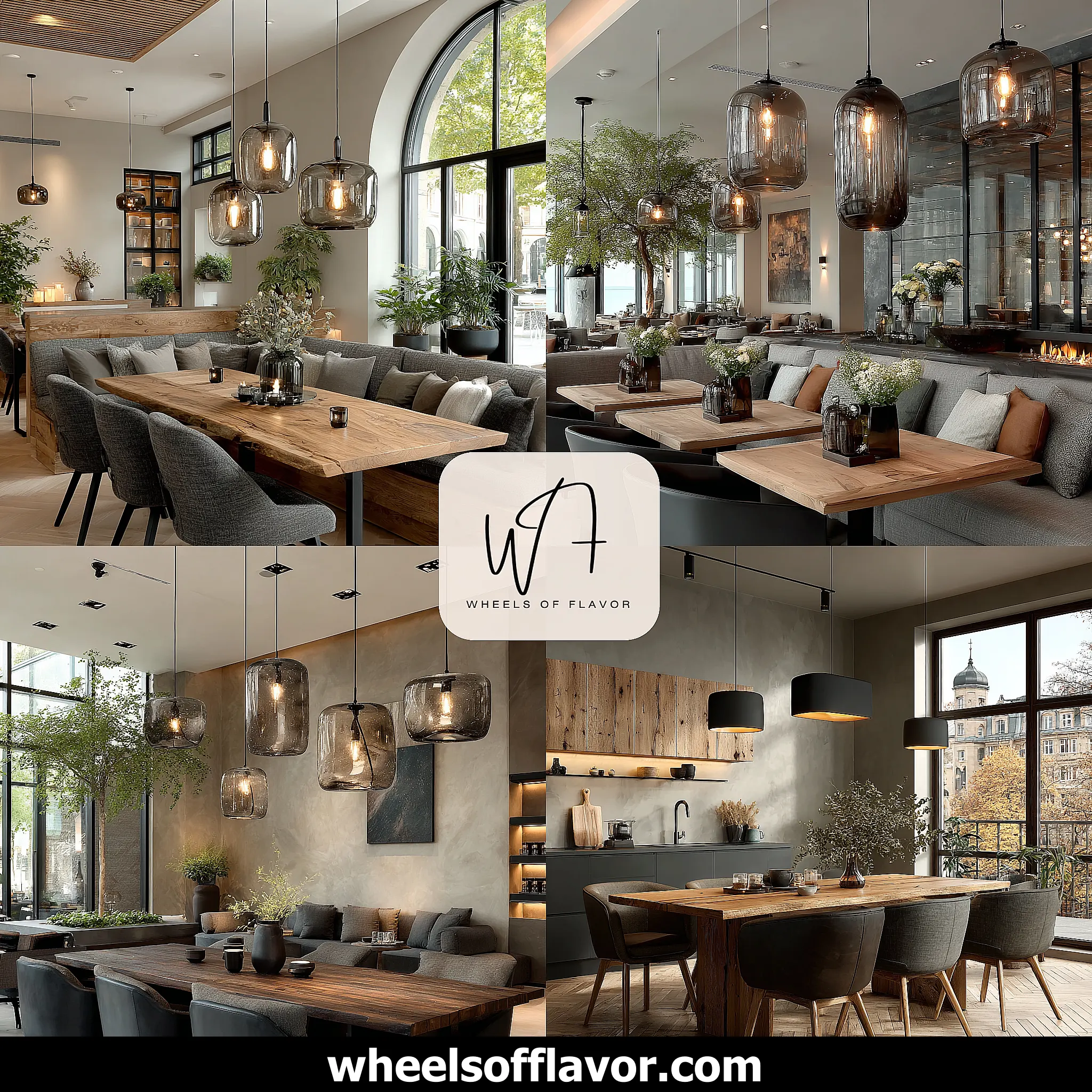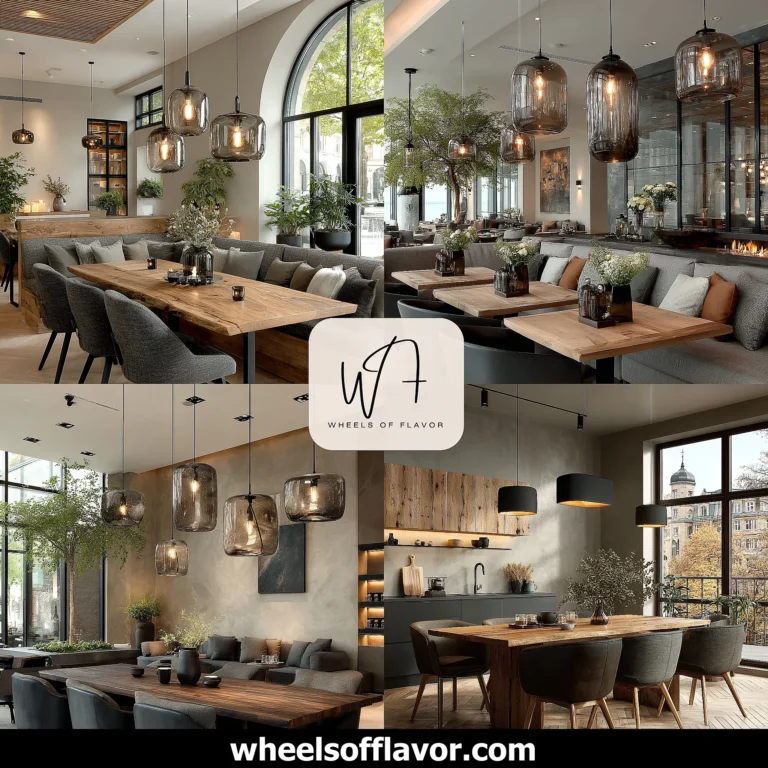
Imagine stepping into a room where the lighting instantly sets a warm, inviting mood that transforms ordinary spaces into extraordinary sanctuaries. That’s the power of pendant lights—a versatile and essential element in modern interior design. Pendant lights hang gracefully from the ceiling, providing focused illumination while doubling as striking decorative pieces. They are crucial for enhancing ambiance, improving functionality in areas like kitchens and dining rooms, and elevating your home’s aesthetic appeal. Unlike bulky fixtures, pendant lights save space and direct light precisely where needed, reducing eye strain and energy waste. According to experts, well-chosen lighting can boost mood and productivity, making pendant lights a smart investment for any homeowner. Whether you’re renovating or simply refreshing a room, these fixtures offer endless customization, from minimalist designs to bold statements. Embrace the trend and discover how pendant lights can redefine your living spaces with style and efficiency. For deeper insights, explore this comprehensive guide on lighting trends from Houzz, a leading authority in home design.
Why Pendant Lights Are Essential for Modern Home Decor
Pendant lights have surged in popularity for their unmatched blend of form and function, making them a must-have in contemporary interiors. These fixtures provide targeted task lighting, ideal for kitchen islands or reading nooks, while freeing up floor and wall space for a cleaner, more open feel. They enhance room aesthetics by serving as focal points—imagine a sleek metal pendant over a dining table, casting a warm glow that elevates meals into memorable experiences. Beyond beauty, pendant lights improve energy efficiency by using LED bulbs, reducing electricity costs and environmental impact. Studies show that proper lighting can uplift moods and reduce stress, making these fixtures key to creating a harmonious home environment. For instance, in open-plan layouts, pendant lights define zones without walls, fostering a sense of intimacy. To delve deeper into their benefits, read this Houzz article on modern lighting innovations. Always opt for dimmable options to adjust brightness for different occasions, ensuring your pendant lights adapt to your lifestyle seamlessly.
Top 4 Pendant Light Styles to Elevate Your Space
Choosing the right pendant light style can dramatically transform your home, and we’ve narrowed it down to four essential types that cater to diverse tastes. First, industrial pendant lights feature raw metals and exposed bulbs, perfect for adding an edgy, urban vibe to kitchens or lofts—think copper finishes with cage designs. Second, minimalist styles offer clean lines and neutral colors, creating a serene atmosphere in modern living rooms; they’re often made of glass or polished steel for understated elegance. Third, rustic pendant lights incorporate natural materials like wood or rope, evoking a cozy farmhouse charm that works wonders in dining areas or entryways. Finally, modern geometric designs use bold shapes and vibrant hues to make artistic statements, ideal for contemporary spaces seeking a pop of personality. Each style serves specific functions: industrial lights excel in task lighting, while minimalist ones enhance small rooms by avoiding visual clutter. When selecting, consider room size and existing decor—for example, pair rustic pendants with wooden furniture for cohesion. Incorporate these styles to infuse character and light into every corner of your home.
How to Choose and Install Pendant Lights Perfectly
Selecting and installing pendant lights requires careful planning to achieve both beauty and functionality. Start by measuring your space: for kitchen islands, allow 30-36 inches between the countertop and the bottom of the light to prevent glare and ensure ample clearance. Choose the right size based on room dimensions—larger rooms can handle bigger or clustered pendants, while smaller areas benefit from compact designs. Consider bulb type; LED options offer longevity and energy savings, with warm white tones for cozy settings. Wiring is straightforward but consult an electrician for safety, especially in older homes. For installation, ensure the ceiling box supports the weight and use adjustable cords for flexibility. Placement matters: hang pendant lights centered over tables or islands to create balanced illumination. Avoid common mistakes like overcrowding or mismatched styles by sketching a layout first. For kitchen-specific tips, such as coordinating with under-cabinet lighting, visit our detailed guide at https://wheelsofflavor.com/kitchen-lighting. With these steps, your pendant lights will shine brilliantly, enhancing daily life with ease and elegance.
Conclusion
In summary, pendant lights are transformative elements that blend practicality with style, offering essential illumination and aesthetic enhancement for any modern home. From the four key styles—industrial, minimalist, rustic, and modern—to expert tips on selection and installation, this guide underscores how these fixtures can elevate your decor while improving functionality. As we look ahead, emerging trends like smart pendant lights with app-controlled dimming and energy-efficient innovations promise even greater convenience and sustainability. To maximize your experience, start by assessing your space’s needs and experimenting with different designs to find the perfect match. Remember, well-placed pendant lights not only brighten rooms but also enrich everyday moments, making them a worthwhile investment. For actionable insights, consult a lighting professional to tailor solutions to your home, ensuring a stunning transformation that stands the test of time. Embrace this journey to create inviting, efficient spaces that reflect your personal style.
Frequently Asked Questions
Q: What are the main advantages of using pendant lights in home decor?
Pendant lights offer numerous benefits, including focused task lighting that enhances functionality in areas like kitchens or desks, reducing eye strain during activities. They save space by hanging from the ceiling, freeing up floor and wall areas for a cleaner look, and serve as decorative focal points that elevate room aesthetics. Energy efficiency is another key advantage, as many pendant lights use LED bulbs to cut electricity costs. Additionally, they improve ambiance by providing adjustable illumination, which can boost mood and create inviting atmospheres for gatherings or relaxation.
Q: How high should pendant lights be hung above a kitchen island for optimal results?
For kitchen islands, pendant lights should typically be hung 30 to 36 inches above the countertop to ensure proper lighting without obstruction or glare. This height allows for ample clearance while directing light effectively onto work surfaces. Adjust based on ceiling height—taller ceilings may require slightly higher placement, but always prioritize functionality. Measure from the island’s surface to the bottom of the fixture, and consider using adjustable cords for flexibility. Proper height enhances both safety and style, making meal prep easier and the space more visually appealing.
Q: Can pendant lights be safely used in bathrooms, and what precautions should be taken?
Yes, pendant lights can be used in bathrooms, but it’s crucial to select damp-rated or wet-rated fixtures specifically designed for moisture-prone areas to ensure safety. Install them away from direct water sources, such as over vanities or away from showers, and adhere to building codes for electrical safety. Opt for sealed designs that prevent water ingress and use LED bulbs for cooler operation. Always hire a licensed electrician for installation to avoid hazards, and ensure the pendant lights complement the bathroom’s size and decor for a cohesive, functional look.

